Mexican Lithograph of Houston, Texas (1845)
A very rare Mexican lithograph view of Houston, Texas issued in 1845. Signed by Hesiquio Iriarte in the stone, and lithographed by Hipólito Salazar. The view, which is almost certainly imaginary, shows a thriving little town along a river with some hills in the distance. The buildings resemble New England saltboxes, and there are two church steeples peeking out from the crowded jumble of structures. There is an arched bridge over the river and two hunters with a dog pose in the foreground. This view was likely copied from a slightly earlier European print - possibly a German publication from circa 1837 - but this Mexican version, made in 1845, by a pair of skilled Mexican lithographers, is certainly special and likely incoporates additional details not in the original view.
The lithograph is the product of two pioneering Mexican lithographers, Iriarte and Salazar, and comes from an extremely rare and short-lived Mexican periodical noted for its beautiful lithograph plates: Revista Cientifica y Literaria (1845-46). This publication was started in 1845 by a group that broke away from another periodical, El Museo Mexicano, and the lithographs that adorned its pages stand as an example of what Michael Mathes has described as the Golden Age of Mexican lithography (1836-1862). Hipolito Salazar had learned lithography at the Academy of San Carlos in Mexico City, likely from José Ignacio Serrano, who in turn had learned from the first lithographer in Mexico, Claudio Linati.
A brief 6-page article by Manuel Payno, extracted from the Revista, concerns early Texas history, and accompanies the lithograph.
A recent book on early Mexican lithography by Maria Esther Perez Salas highlights the importance of the Revista Cientifica y Literaria within 19th-century Mexican visual culture. She writes that the magazine had a special focus on the northern frontier regions, pointing out how the editors of the magazine were very much alive to the impending annexation of Texas by the United States:
La Revista Científica manifestó un especial interés por el norte del pais, al cual abordó desde una perspectiva costumbrista y analizó desde el punto de vista político; llamó la atención sobre el abandono en que se encontraba. Manual Payno, en su artículo "Tejas" ademas de resaltar dicha situación, describió las características de sus habitantes; destacó la belleza de sus mujeres idealista y románticamente... Esto se explica porque en esos momentos (1845) estaba a punto de efectuarse la anexión de Texas a los Estados Unidos; entonces el tema resultaba de gran actualidad y los editores de la Revista Científica recordaban a la población que había otras áreas en igualdad de circunstancias - Costumbrismo y Litografía en México, page 243.
Although this view of Houston is not noted in John Reps's Cities of the American West, we include here his comments on the situation of Houston, which served as the first capital of the Republic of Texas:
Houston was probably the most populous community in Texas... a census in 1839 indicated a population of 2,073, and the place had two theatres, several hotels, a number of boarding houses, and a growing business district.
Houston remained the capital until 1839, when it was moved to Austin.
This rare Mexican lithograph of Houston is not in Mavis P. Kelsey & Robin Brandt Hutchinson, Engraved Prints of Texas, 1554-1900, which does list a similar wood engraving that appeared in the Illustrated Sun, New York, circa 1845-1846.
Rarity
Examples of this early lithograph of Houston are all but non-existent in the market. The original periodical from which it came is impossibly rare, and known in only a handful of mostly broken runs within institutional confines.











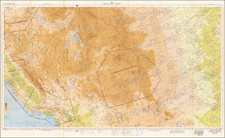
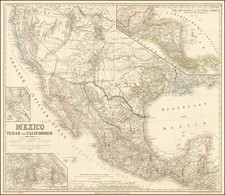
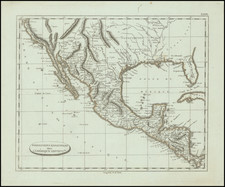
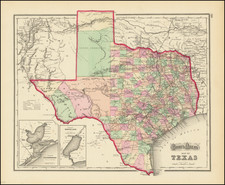
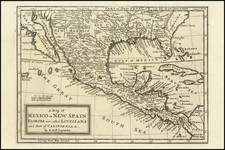
![Mexico [Texas on the Eve of Independence]](https://storage.googleapis.com/raremaps/img/small/84917.jpg)